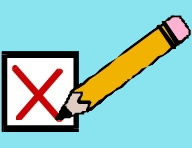
Post Election
After the election, when the result is known and you’ve either celebrated your success or drowned your failure, you should be left with some useful information which will help you next time.
The canvass results, even if only partially completed, will have identified some of your supporters. The number teller returns from the polling station will tell you who voted, so next time you can canvass somewhere you missed this time and identify more of your supporters. It's simple isn’t it, well actually no.
Firstly, a significant number of people tell the canvassers of every party that they will vote for their candidate so your canvass returns are never going to be 100% accurate. Secondly, some people who swear blind that they will vote for you never actually vote at all, but you may have noticed this from the outstanding names on the knock-up sheets at the end of the day. Most significantly, throughout this process mistakes are made.
The most important piece of information that you need to be able to confirm is who actually voted in the election. Your tellers may not have noted every number due to several people arriving at once; some people may have refused to say or not have had their polling card or not have noted the number given by the polling clerk.
Fortunately, there is a means to verify who has actually voted. When a voter asks for a ballot paper at the polling station the polling clerk scores their name off a copy of the electoral register. This is so that no-one can vote more than once. This register, known as the ‘Marked Register’ is kept by the Electoral Registration Office of your local authority and if approached after the election will supply a copy to you. Some authorities charge for this, some don’t. Some charge a significant fee, some only photocopying costs.
If you obtain a copy of the Marked Register you should go back to your knock-up sheets as they were at the start of Election Day, or if using a computerised system remove the records of votes cast in the election and go through the process of identifying your promised voters who voted all over again, just like you did on Election Day, except this time you will have all the details at the start of your process and it will take a fraction of the time.
This will produce a definitive record of who voted and from that, together with your canvass returns, a good but not perfect picture of who voted for you.
The reason this information is important is that over the course of several elections you can trace who votes every time without fail and who never votes. Once this data is analysed by road, or block of flats you will soon realise that there may be areas that are frankly not worth canvassing next time because so few electors from there vote whereas another nearby area has regular high turnouts and effort spent there will be more likely to increase your vote. It sounds harsh but if you have limited resources you can't afford to be charitable.
Remember to bear in mind that by the time you do this the actual result will be known so you will know how many people actually voted for you. This exercise will show whether your real vote was higher or lower than your promised vote. If higher then you haven’t identified all your supporters and next time you might want to expand the scope of your canvassing. If lower then you may need to knock-up more and improve your turnout.
Continue to Election Expenses....